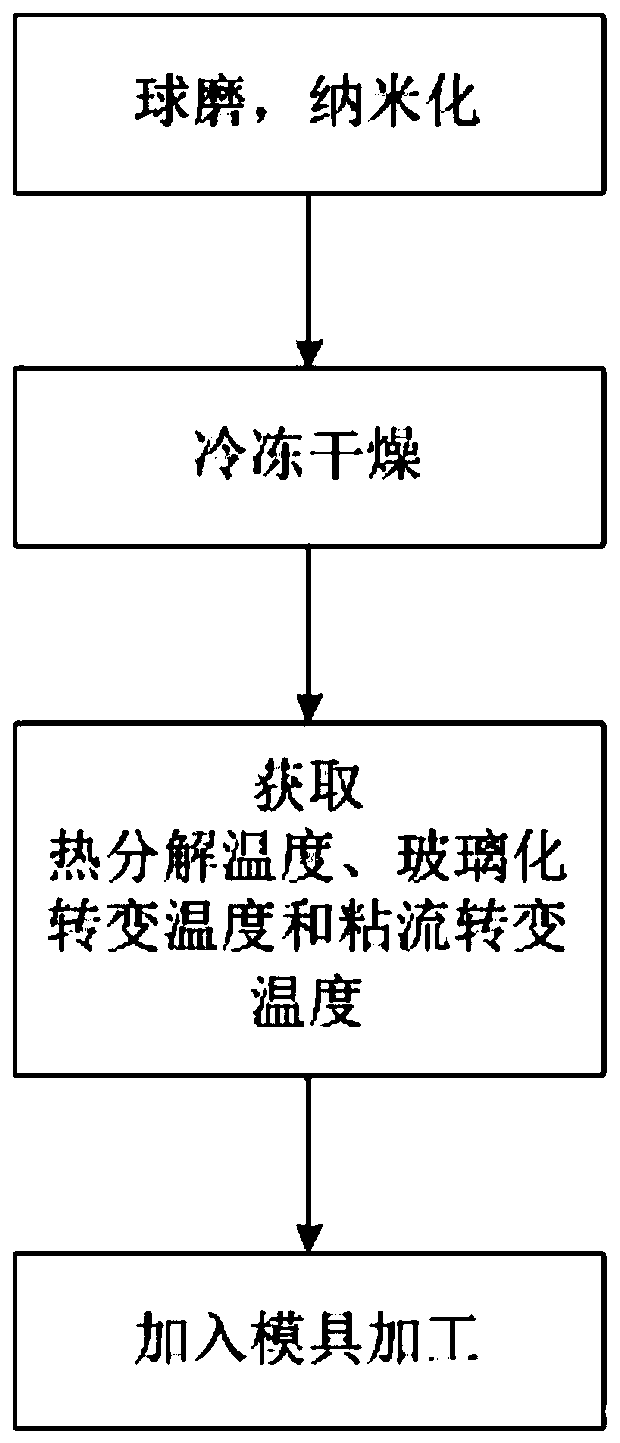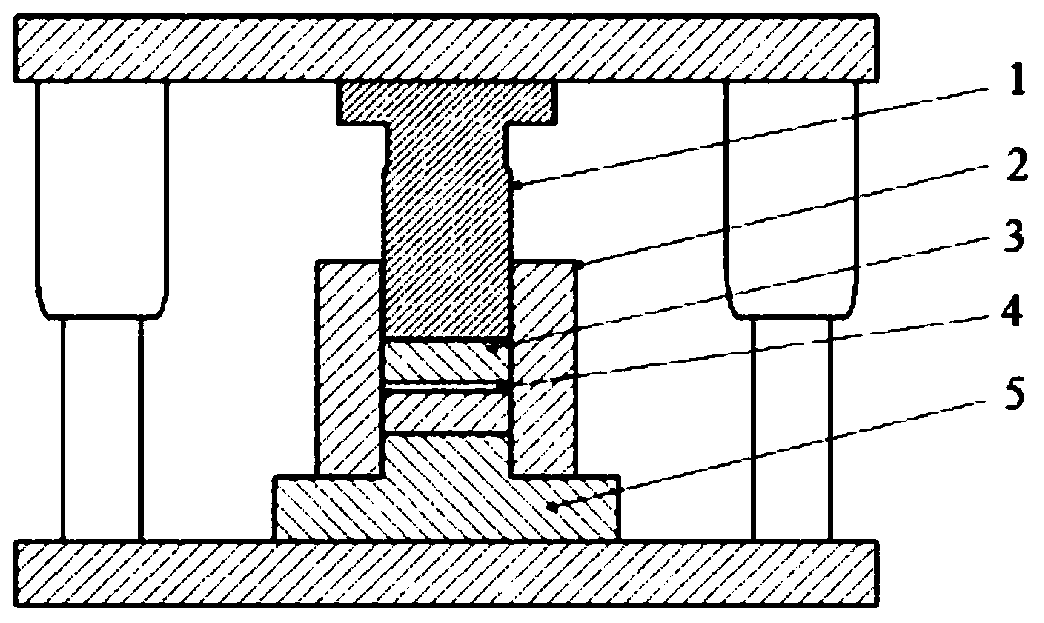Nanoparticle industrial processing method based on natural polymer without melting point
A natural polymer and nanoparticle technology, applied in the field of polymer material forming and processing, can solve the problems of reducing the viscous flow transition temperature and glass transition temperature of non-melting point natural polymers, low product strength, difficult processing, etc. Absorbent properties and chemically active, high-strength effects
- Summary
- Abstract
- Description
- Claims
- Application Information
AI Technical Summary
Problems solved by technology
Method used
Image
Examples
Embodiment 1
[0040] The implementation steps are as follows:
[0041] 1) Preparation materials: natural polymers with no melting point, such as microcrystalline cellulose powder, after 24 hours of ball milling at 1500rpm, the particle size is reduced to the nanometer level, and cellulose nanosphere materials with a uniform particle size of 1 to 1000nm are obtained ;
[0042] 2) Freeze-drying: use a freeze-drying machine to completely dry the material in a vacuum at -80°C to ensure that the cellulose nanosphere material does not agglomerate and has good fluidity;
[0043] 3) Obtain the processing temperature range: adopt thermogravimetric analysis to obtain the thermal decomposition temperature of the material, and use differential scanning calorimetry to obtain glass transition temperature and viscoflow transition temperature;
[0044] 4) Prepare the mold: This experiment uses a φ30 sheet mold, and the surface requirements of the mold cavity are very high, and the roughness is at the mirr...
Embodiment 2
[0050] The implementation steps are as follows:
[0051] 1) Preparation materials: natural polymers without melting point, such as microcrystalline cellulose powder, after ball milling at 1600rpm for 40 hours, reduce the particle size to nanometer level, and obtain cellulose nanosphere materials with uniform particle size of 1-1000nm ;
[0052] 2) Freeze-drying: use a freeze-drying machine to completely dry the material in a vacuum at -60°C to ensure that the cellulose nanosphere material does not agglomerate and has good fluidity;
[0053] 3) Obtain the processing temperature range: adopt thermogravimetric analysis to obtain the thermal decomposition temperature of the material, and use differential scanning calorimetry to obtain glass transition temperature and viscoflow transition temperature;
[0054] 4) Prepare the mold: This experiment uses a φ30 sheet mold, and the surface requirements of the mold cavity are very high, and the roughness is at the mirror level. The str...
Embodiment 3
[0060] The implementation steps are as follows:
[0061] 1) Preparation materials: natural polymers with no melting point, such as microcrystalline cellulose powder, after 10 hours of ball milling at 1700rpm, reduce the particle size to nanometer level, and obtain cellulose nanosphere materials with a uniform particle size of 1-1000nm ;
[0062] 2) Freeze-drying: use a freeze-drying machine to completely dry the material in a vacuum at -70°C to ensure that the cellulose nanosphere material does not agglomerate and has good fluidity;
[0063] 3) Obtain the processing temperature range: adopt thermogravimetric analysis to obtain the thermal decomposition temperature of the material, and use differential scanning calorimetry to obtain glass transition temperature and viscoflow transition temperature;
[0064] 4) Prepare the mold: This experiment uses a φ30 sheet mold, and the surface requirements of the mold cavity are very high, and the roughness is at the mirror level. The st...
PUM
| Property | Measurement | Unit |
|---|---|---|
| particle diameter | aaaaa | aaaaa |
Abstract
Description
Claims
Application Information
 Login to View More
Login to View More - R&D
- Intellectual Property
- Life Sciences
- Materials
- Tech Scout
- Unparalleled Data Quality
- Higher Quality Content
- 60% Fewer Hallucinations
Browse by: Latest US Patents, China's latest patents, Technical Efficacy Thesaurus, Application Domain, Technology Topic, Popular Technical Reports.
© 2025 PatSnap. All rights reserved.Legal|Privacy policy|Modern Slavery Act Transparency Statement|Sitemap|About US| Contact US: help@patsnap.com


